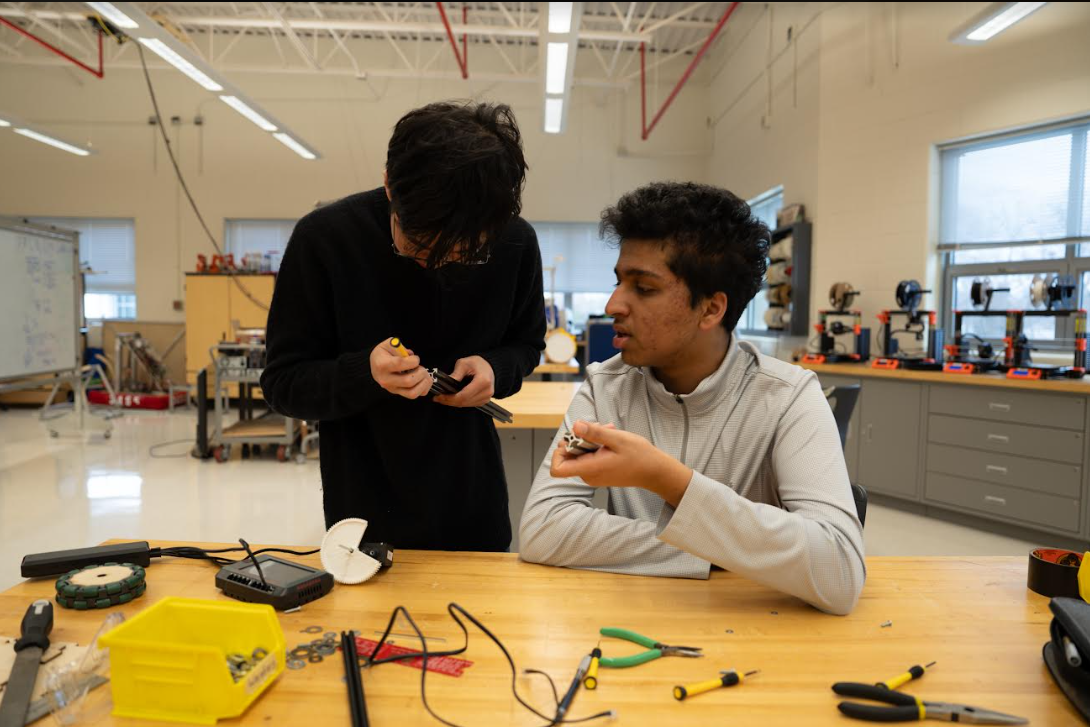Make a short documentary about the history of a cultural dish.
Complete thirty lengthy multiple-choice questions and three free-response questions in 60 minutes.
Design and create a robot that can play soccer.
Projects as summative assignments can be a good way to measure student progress; however, the heavy utilization of project assessments can become overwhelming for students. Projects and tests are just two of many ways to demonstrate knowledge and grade students, making the establishment of a balance between the two essential.
In recent years, educators have begun to dive into the world that is project-based learning (PBL). The PBL approach emphasizes a broader learning strategy where students investigate information through hands-on assignments. PBL can help students who have learning disabilities, a lack of resources, or obstacles like language barriers to learn easier, according to the Buck Institute for Education.
However, tests and exams remain essential. Standardized tests remain a dependable source for gauging student knowledge on particular topics. They can be used as a quick knowledge check, regular unit test, or final exam. When needing to test a large number of people, such as for a final exam, these standardized exams are more applicable than a project assignment because the scoring is rigid for student performance. This procedure eliminates teacher bias and works better for students who struggle with group work or less structured assignments.
For some students though, tests can be difficult. Nemours Children’s Health emphasizes the challenges of test anxiety caused by limited time, which makes the assessment more arduous. Projects, however, are typically assigned over days or weeks. Students usually only have to meet small deadlines as a way to stay within the timeframe. As more teachers move to a PBL system, students may see an overload of project work which can become stressful.
When trying to gauge a student’s learning progress, written tests are a good measurement tool to avoid confounding variables that affect student performance. At Jefferson, many humanities classes utilize Specific, Measurable, Achievable, Relevant, Timely, and Rewarding (SMARTR) tests where students take a similar test, such as writing a thesis or persuasive essay, at the start, middle and end of the year. The assessments aim to discover weaknesses and test continual improvement in the subject area. In Research and Statistics 2, teachers hold progress checks on Mondays, a mini-quiz, to ensure students have learned the past week’s material and are ready to move on. However, these are the only assessment grades given apart from the end-of-class final exam.
One clear difference between tests and projects is the scoring system. Projects often have rubrics and the decision as to whether a student has met expectations or not is determined by the teacher. While verbal tests are similar, multiple choice and free-response have a set binary system where the answer is right or wrong. Having a balance between project and test assessments would allow for an even amount of grading based on both a teacher’s opinion and the set test standard.
Projects and tests each have their place. When teachers are unable to quickly assess student learning with a project, they can with a test. In the same way, projects can be more valuable than tests to teach students how to find credible sources and use applications like Canva. In moderation and balance, both knowledge assessment strategies can be useful for teachers and beneficial for students.


